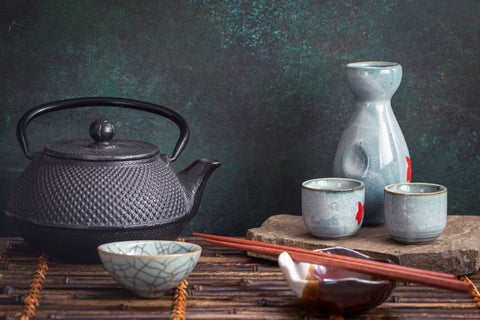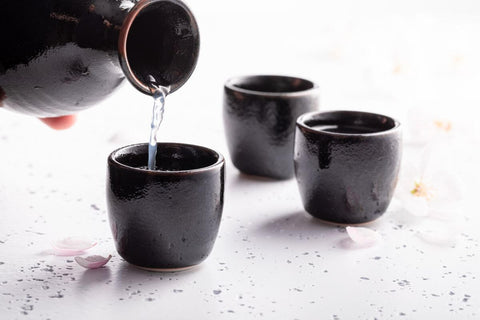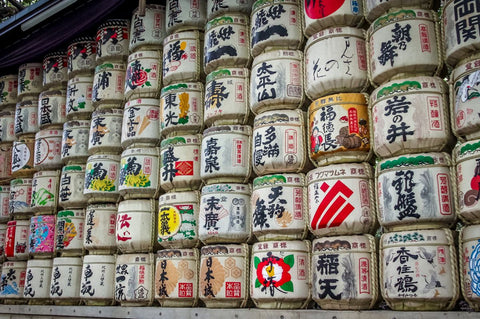What sake varieties should beginners know about?
- Junmai-shu
- Ginjo-shu
- Daiginjo-shu
- Honjozo-shu
- Taru-shu
- Koshu-shu
- Namazake
- Nigori-zake
Beginners in the sake world might think sake is a drink that only differs according to brand. But just like the different varieties of red wine, sake has different types that make it easier to recommend when someone wants a sip. These types differ in taste, alcohol level, and character. In this article, we discuss the quintessential sake varieties for beginners. After all, how can you find your favorite unless you try them all?
How Do Sakes Differ?

The different types of sake vary according to, and in some ways because of, the process and ingredients that go into making them.
As we know, sake is made from fermented rice. But there are different varieties of rice, all of which can be made into sake. The level to which rice is milled can also vary, leading to different levels of refinement and flavor.
Using certain strains of yeast or kinds of koji (a type of mold that breaks down the starches in rice) can also change the flavor profile of the sake.
Finally, many methods of fermentation and aging come into play, which also changes the flavor and aroma of the finished product.
Now that that’s clear, let’s move on to the fundamental types of sake!
Junmai-shu
A pure rice sake made from only rice, water, yeast, and koji, this has a rich, full-bodied flavor with a higher acidic level compared to other types. It is often served hot or warm, and what sets it apart is its lack of alcohol—so some other types of sake can also be considered Junmai-shu if they have no alcohol added to them.
The rice of the Hakkaisan Tokubetsu Junmai has been polished down to 60%, producing a clean Junmai-style sake. It has a well-balanced mellow and elegant flavor that matches not only Japanese food but other cuisines as well.
Ginjo-shu

Made from rice that’s been milled to remove at least 40% of its outer layer, this sake has a more refined and delicate flavor. Ginjo-shu brewers use a special type of yeast and ferment its rice mash at low temperatures. It is best served cold to preserve its aroma.
We recommend the Amabuki Junmai Ginjo Namasake Sunflower Yeast if you’re looking for something with a rounded and creamy flavor on the palate at first and a hint of dryness at the end. An unpasteurized sake (more commonly known as Namazake, which we’ll discuss in a later section), it also has a refreshing attack with 16.5% alcohol.
Daiginjo-shu
A type of ginjo-shu that’s been polished to remove at least 50% of its outer layer, it has a very light and delicate flavor, is high in fragrance, and is rich in body. It’s often considered the highest-quality sake.
At Ralph’s, we have the Kitaya Daiginjo Gokujo Shizuki Shibori, a masterpiece that’s been awarded the Champion Sake title at the IWC 2013 in London against 583 other sakes. It uses high-quality Yamadanishiki rice that’s been polished down to 35% and fermented at controlled temperatures. The IWC characterized it as rich and mellow, carrying a clear taste and an elegant aroma.
Honjozo-shu
Ideally served warm, this type of sake is made by adding a small amount of distilled brewer’s alcohol to the rice mash. It has a lighter and cleaner taste compared to Junmai-shu. Its degree of milling is 70%, which means that 70% of the rice grain retains its original size while the remaining 30% is milled.
The vibrant, crisp, and clean flavor of the Urakasumi Honjozo Karakuchi is subtle yet in no way forgettable. It can be served hot or cold, with a variety of dishes.
Taru-shu
Taru sake is aged in wooden casks made from Japanese cedar, giving it a distinctive woody flavor. At Ralph’s, we have the Hakushika Junmai Yoshino Taru Sake, which is best served in a wooden masu cup.
Koshu-shu
Koshu sake is aged for at least three years, giving it a complex, mellow flavor similar to aged wine. Any variety of sake can be classified as koshu as long as it meets that requirement.
Namazake

Namazake simply means that the alcohol in sake is not pasteurized, so all kinds of sake can be classified as Namasake for as long as they have this characteristic. This type of sake needs to be refrigerated so as not to lose its aroma and flavor.
Besides the ginjo-shu namasake we recommended above, we also have the Amabuki Junmai Ginjo Namasake Strawberry Yeast, which was brewed using yeast isolated from the flowers of strawberry plants. Its sweetness, fruitiness, and acidity form a unique harmony. Though it’s best served chilled, it can also be enjoyed warmly.
Nigori-zake
Another classification of sake, Nigori-zake is unfiltered, giving it a cloudy appearance and a slightly sweet, creamy taste that’s ideal for dessert. It also often has some koji rice in the drink itself.
Key Takeaway
As we mentioned above, there are several ways to classify and categorize sake. But sake novices need not worry—they’re all delicious and satisfying in their way. If you want to become a sake expert, the best way is to start with these sake varieties for beginners. Check out our sake collection online or at a Ralph’s branch near you!



